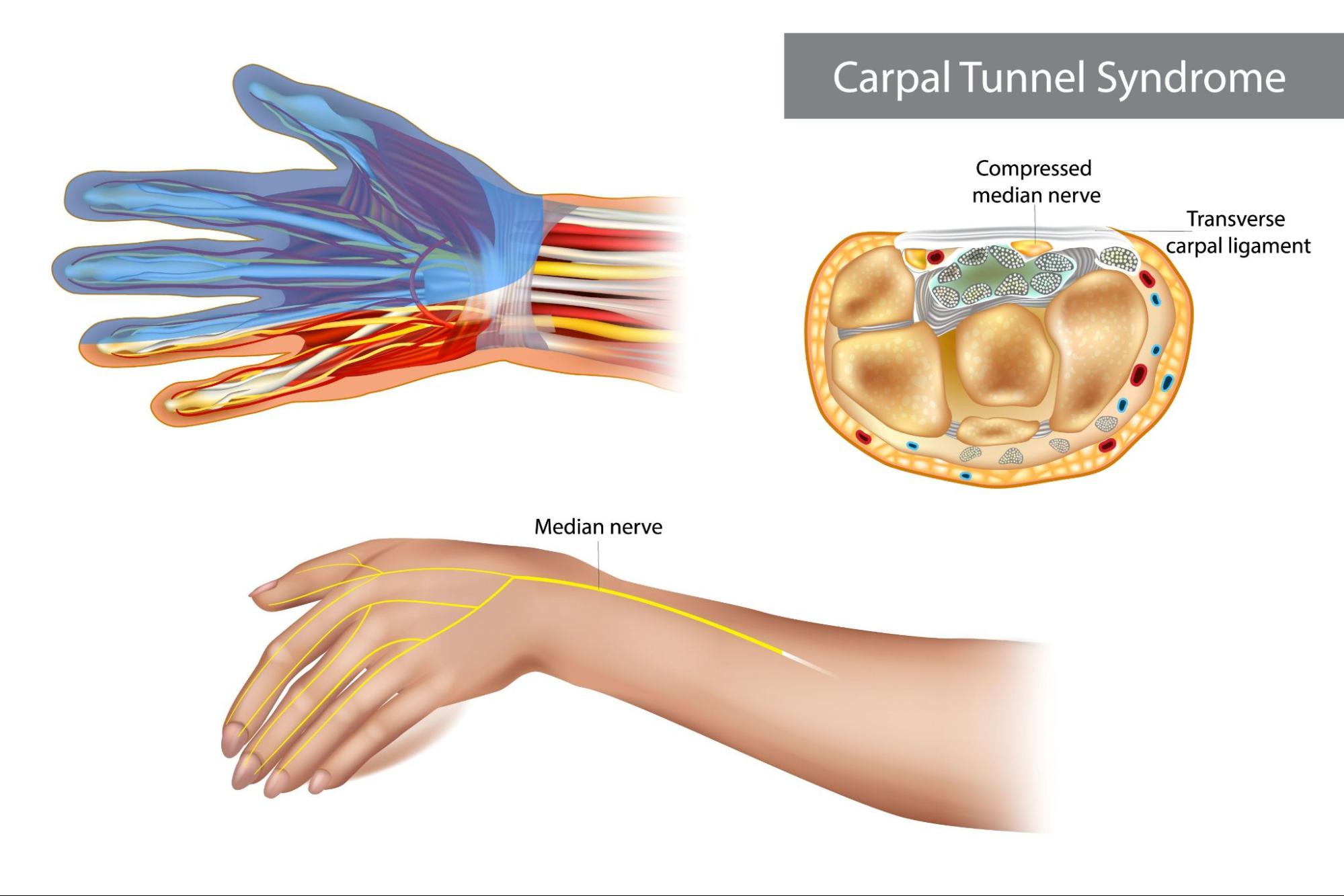
Physical Therapy for Carpal Tunnel Syndrome
You’re not sure why, but your wrist hurts. If you’re like the many millions of Americans who sit at a desk all day and do a lot of typing, or you work a job with repetitive movements such as assembly or factory work, this may put you at risk for carpal tunnel syndrome. But just as much at risk are people with osteoarthritis, diabetes, or those who are pregnant. In fact, many people can develop carpal tunnel and not even realize it at first, as it can be mild in it’s initial stages, gradually becoming more painful over time.
Fortunately, the best remedies for carpal tunnel syndrome are non-invasive. Icing, splinting, and physical therapy are long considered some of the most effective ways to treat carpal tunnel, with physical therapy being particularly successful at both alleviating symptoms and preventing re-occurrence.
At Evolution Physical Therapy, we help people from our California, Colorado, Connecticut, and Long Island-based centers with their carpal tunnel pain every day. With the right physical therapy and lifestyle changes, you can wave goodbye to carpal tunnel for good.
Causes of Carpal Tunnel Syndrome
Any disease, condition or injury that causes an increase in pressure to the median nerve of the hand can cause carpal tunnel syndrome to occur. Women and older adults are the people most likely to suffer from carpal tunnel syndrome. The following are some of the main causes of the disorder:
- Sprains, fractures, or other traumas to the wrist – any injury suffered to the wrist may result in pressure applied on the carpal tunnel, which can lead to compression of the median nerve, sometimes causing carpal tunnel syndrome.
- Tumor or cyst in the carpal tunnel – the development of a growth in the carpal tunnel can cause pressure to the median nerve and may eventually cause carpal tunnel syndrome to develop.
- Hypothyroidism- many people with thyroid disease, and especially hypothyroidism, develop carpal tunnel.
- Rheumatoid arthritis – rheumatoid arthritis is an underlying health condition that may cause carpal tunnel syndrome. Arthritis can cause inflammation that narrows the carpal tunnel, which can compress or damage the median nerve, thereby causing carpal tunnel syndrome.
- Diabetes or metabolic disorders- patients with these conditions have nerves that are more prone to damage, and, since carpal tunnel syndrome is caused by damage or compression of the median nerve in the wrist, people with these conditions are at higher risk for carpal tunnel syndrome.
- Fluid retention- when your body holds onto excess water, your tendons might swell and then put pressure on the carpal tunnel. Two situations in which this can occur are during pregnancy or menopause for women.
Where is Carpal Tunnel Pain?
Just where exactly is carpal tunnel pain, anyway? And how do you know if that is what is behind your wrist hurting? Carpal tunnel pain occurs in the upper wrist area, as shown below.

If you feel pain and/or numbness in that region of your wrist, you may be experiencing carpal tunnel pain. Not only will a physical therapist be able to come up with a treatment plan for your condition, but he or she will diagnose your pain. As there are other injuries or illness that may occur in this area and cause pain, it is important to get a proper diagnosis.
Physical Therapist Evaluation of Carpal Tunnel Syndrome
In an attempt to understand your pain fully, your Physical Therapist will perform a physical evaluation after collecting your medical history. They may ask if you have suffered a previous or recent trauma to the area, where and how bad your pain is, if you have trouble with any specific movements, and if you often perform repeated tasks during your daily activities that may require the use of your wrists and hands.
Following these questions, they will ask you to perform a series of movements, such as demonstrating grip strength and reaching for objects, and will also palpate the wrist in order to understand where your pain is coming from. Through these and other tests, they will try to rule out any other reasons you may be experiencing wrist pain other than carpal tunnel syndrome. You may be referred to another medical provider for tests such as X-rays and nerve studies to help get a more accurate diagnosis.
How Does Physical Therapy Treat Carpal Tunnel Syndrome?
Since carpal tunnel syndrome is caused by compression or damage to the median nerve located in the carpal tunnel, your physical therapist can give you exercises to help alleviate that pressure. They may also use other techniques to support your wrist and hand, including:
- Splinting and bracing
- Medications to reduce swelling
- Range of motion exercises
Preventing Carpal Tunnel Syndrome
Prevention of carpal tunnel syndrome may be possible with the right arsenal of knowledge and exercises to help you avoid compressing your median nerve. Maintain proper posture at work or while seated to help avoid compression of the neck that can, in turn, affect the wrists, take breaks from repetitive tasks that require the wrists, make sure you have a workstation that allows for proper posture and comfortable typing, use bracing for extra support when necessary, and perform stretches and exercises for your wrists to maintain flexibility and strength. If you are beginning to experience wrist pain, visit your physical therapist for an evaluation sooner rather than later. Your physical therapist will be able to give you exercises, stretches, and recommendations to help you avoid worsening your wrist pain, and potentially help you avoid developing carpal tunnel syndrome.
When to see a Physical Therapist for Carpal Tunnel Syndrome Relief
If you have been diagnosed with carpal tunnel syndrome, or you suspect you may have carpal tunnel pain, your best course of action will be to make an appointment with a physical therapist to determine the cause of your wrist pain. At Evolution Physical Therapy, we have convenient locations throughout California, Colorado, Connecticut, and Long Island, with specialist PT providers that offer a range of physical therapy services and help to provide you with the treatment, education, and additional support you need on your road to recovery. Reach out to us today by calling to set up an appointment at a location near you, or fill out our Request an Appointment form.
